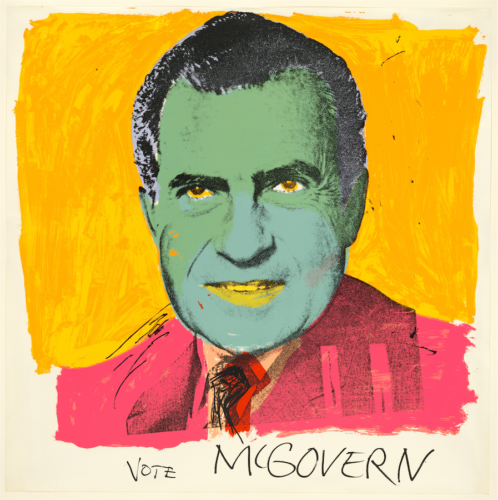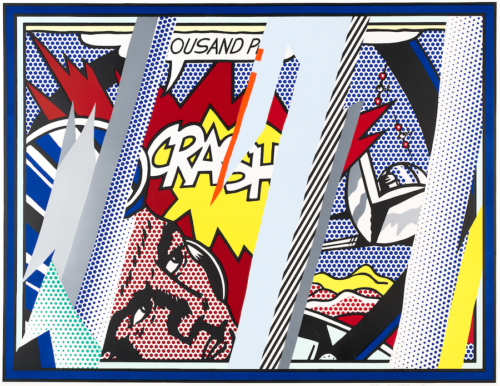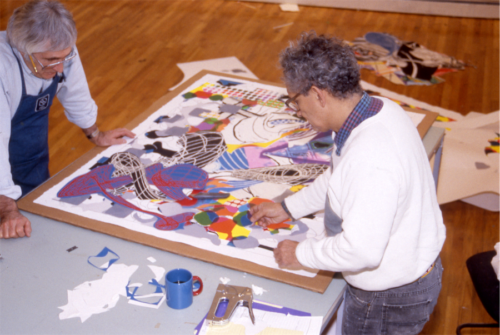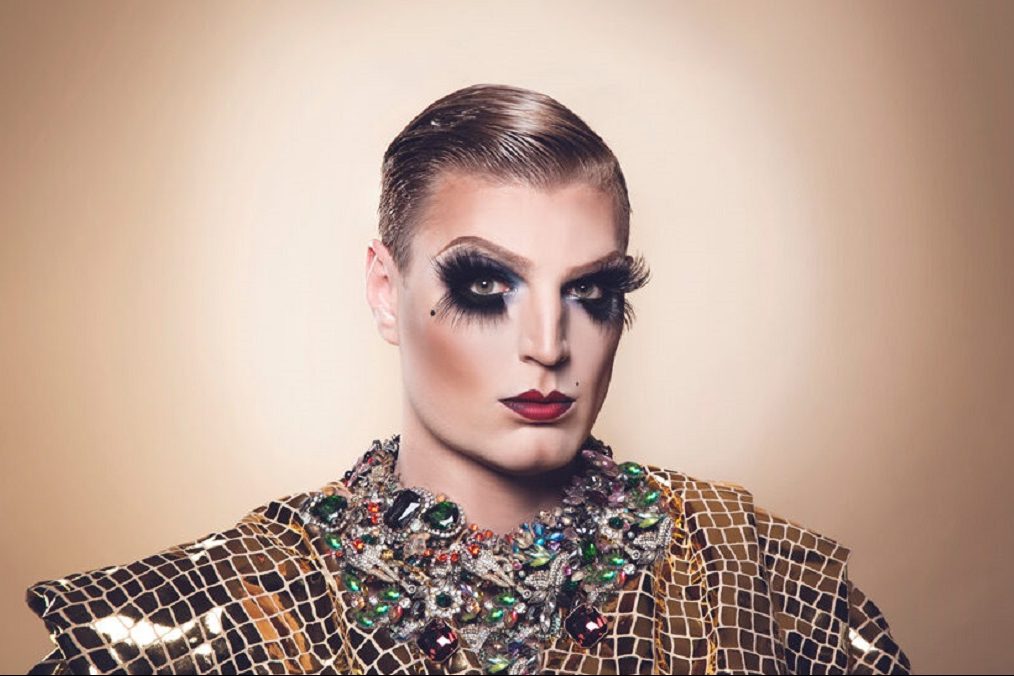
Arts editor HELEN MUSA takes a closer look at a small exhibition showing large-format, post-war American prints.
BEYOND the blockbusters, the National Gallery of Australia is always running smaller exhibitions year round, many revealing the depth of its own collection.
A case in point is “Lichtenstein to Warhol: The Kenneth Tyler Collection”, a showcase of post-war American large-format printmaking from titans such as Anni and Josef Albers, Helen Frankenthaler, Jasper Johns, Roy Lichtenstein, Joan Mitchell, Robert Rauschenberg, Andy Warhol, Claes Oldenburg, Nancy Graves and David Hockney.
Behind the transformation of printmaking from a minor technique to a hot international art form was the trailblazing master printer and publisher Ken Tyler, admired by gallery director Nick Mitzevich as a revolutionary and a regular visitor to the gallery over the years.
The exhibition marks the establishment of The Kenneth E Tyler AO and Marabeth Cohen-Tyler Foundation to enable the NGA to continue maintaining a dedicated publication and exhibition program.
“Printmaking was a small affair, frowned on as derivative until Tyler came along,” NGA curatorial assistant David Greenhalgh says, adding that in Europe the rule was that prints should be small.
“Tyler changed all that, ushering a print renaissance that linked well with abstract expression and the big, gestural paintings,” he says.

Mitzevich notes the NGA’s first director James Mollison was quick off the mark, acquiring the Kenneth Tyler Print Collection in 1973, followed by other major acquisitions, so that the collection now includes more than 7400 editioned prints, proofs, drawings, paper works, screens, multiples and illustrated books as well as photography, film and audio.
In 1963 Ken Tyler received a Ford Foundation fellowship to attend the Tamarind Lithography Workshop in Los Angeles to work on ink and plate research and collaborate with the Bauhaus artist and colourist, Josef Albers. He was a prodigy, Greenhalgh says, and soon became technical director at Tamarind, where he and colourist Albers worked with a further 32 artists.
Looking around the NGA’s Orde Poynton Gallery, where the show is installed, Greenhalgh sees an exhibit that can be enjoyed by the public and also serve as a living textbook on printmaking for the experts.

Robert Rauschenberg’s “Booster” is one of his favourites. Six X-rays of the artist’s body joined together to form a life-sized lithograph as “a self-portrait of inner-man” it was, when made in 1967, the largest hand-printed lithograph ever produced. Greenhalgh says he wanted the X-rays to be the same size as him, among the many problems was sourcing large enough paper stock.
Radically different prints are on show, from Donald Sultan’s minimalist blue poppies, part of Tyler’s “bigger, brighter, bolder” push to the lyricism of Nancy Graves’ etchings and aquatint printing in coloured inks and chalks, who worked with Tyler in New York when he began to seek out younger creators and female artists to work with.
Some works on show are printed on dry paper, some on wet, some are painterly and some sculptural, as in an early kind of 3-D printing where Claes Oldenburg moulded coloured polyurethane relief over two-colour lithograph.

The subject matter ranges from humble objects such as bread slices and electric toothbrushes to a scene from the Japanese “The Tale of Genji” and the complex vision in Frank Stella’s even more complex print, “Ambergris”, 1993, on the walls for the first time, which reveals the subtle variations in the proofing process.
Ah yes, “and there’s just one Andy Warhol work in the show, but it’s a beauty,” Greenhalgh says. Warhol and Tyler only worked once on a fundraiser for Democrats’ presidential candidate George McGovern in 1972, with the lurid colours making satirical comment on opposing Republican candidate Richard Nixon.
Alas, Nixon won a majority vote in 49 states, putting both Warhol and McGovern on the outer – not Tyler though.
“Lichtenstein to Warhol: The Kenneth Tyler Collection”, National Gallery until March 9. A free exhibition.
Who can be trusted?
In a world of spin and confusion, there’s never been a more important time to support independent journalism in Canberra.
If you trust our work online and want to enforce the power of independent voices, I invite you to make a small contribution.
Every dollar of support is invested back into our journalism to help keep citynews.com.au strong and free.
Thank you,
Ian Meikle, editor




Leave a Reply